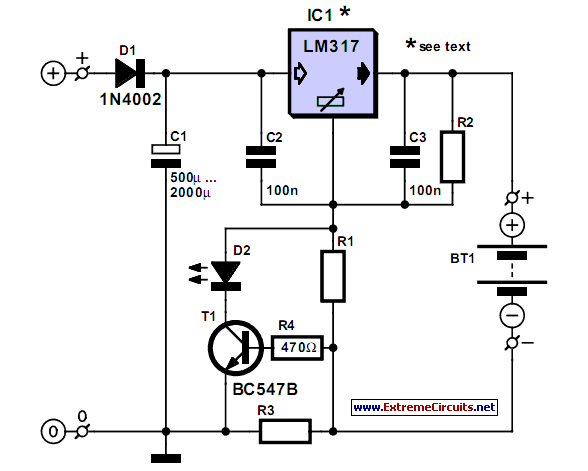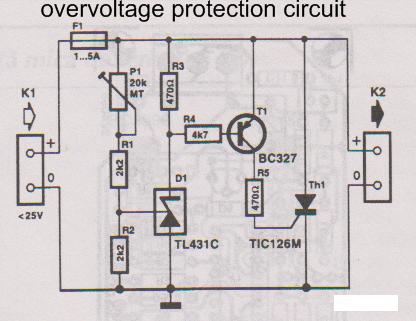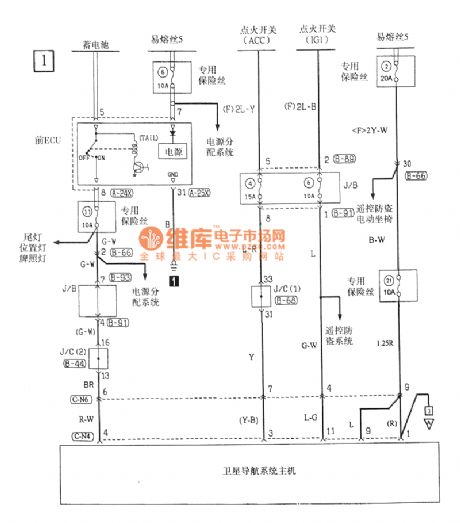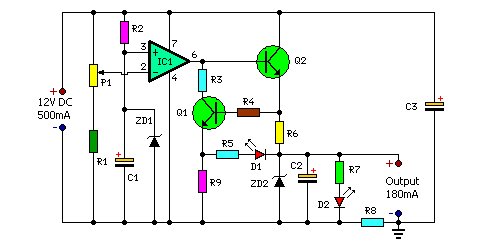
12 VOLT GEL CELL CHARGER
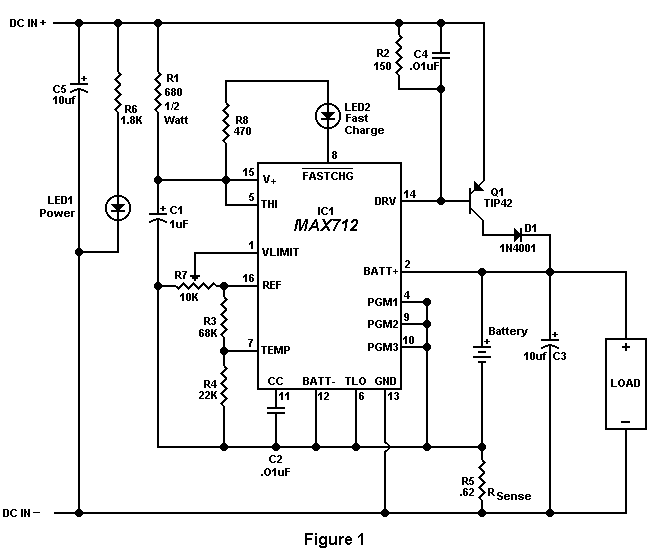
When a discharged gel cell is connected, the charger goes into a fast charge mode at a fixed rate of 400 ma. After the chip detects the voltage leveling off or when 4 1/2 hours has elapsed (whichever happens first), the fast charge will stop. After the fast charge has ended, the IC goes into a trickle charge rate of about 50 ma. This trickle charge continues until 13.8 volts is reached, which will stop all charging current since the cell is now fully charged. If the cell voltage should drop for any reason, either a fast charge or trickle charge (IC will detect what is needed) will start again. When constructing this circuit, be sure to attach a small heat sink to Q1. Apply a DC (partially filtered) voltage of at least 15.3 volts. The voltage must never go below this level even under load conditions. Many of the DC wall transformers available will...
This circuit description pertains to a charger designed specifically for gel cell batteries, which are sensitive to overcharging and require specific charging protocols to ensure longevity and optimal performance. The charger employs an integrated circuit (IC) that manages the charging process through two distinct phases: fast charging and trickle charging.
In the fast charge phase, the charger delivers a constant current of 400 mA to the gel cell. This phase is initiated upon connecting a discharged gel cell. The IC monitors the battery voltage, and the fast charge continues until either the voltage stabilizes, indicating that the battery is nearing full charge, or a predetermined time limit of 4.5 hours is reached. This dual condition ensures that the battery is charged efficiently while also preventing potential damage from prolonged charging.
Once the fast charge phase concludes, the IC transitions to a trickle charge mode, where the charging current is reduced to approximately 50 mA. This lower charging rate is essential for maintaining the battery at a full charge without overcharging it. The trickle charge continues until the battery voltage reaches 13.8 volts, at which point the charging current is completely halted. This voltage threshold is critical, as it signifies that the battery is fully charged and ready for use.
Additionally, the circuit incorporates a feedback mechanism that allows the IC to detect any drop in battery voltage. Should the voltage fall below a certain level, the charger will automatically reinitiate either the fast or trickle charge mode, depending on the state of the battery. This feature ensures that the battery remains charged and reduces the risk of deep discharge, which can significantly shorten the battery's lifespan.
For practical implementation, it is recommended to attach a small heat sink to the transistor Q1, which is likely involved in regulating the charging current. This precaution is necessary to dissipate heat generated during operation, especially during the fast charge phase. Furthermore, the circuit requires a DC voltage supply of at least 15.3 volts, which must be maintained even under load conditions to ensure proper charging functionality. Utilizing a suitable DC wall transformer that meets these voltage requirements is crucial for the reliable operation of the charger.When a discharged gel cell is connected, the charger goes into a fast charge mode at a fixed rate of 400 ma. After the chip detects the voltage leveling off or when 4 1/2 hours has elapsed. (which ever happens first.) the fast charge will stop. After the fast charge has ended, the IC goes into a trickle charge rate of about 50 ma. This trickle charge continues until 13.8 volts is reached which will stop all charging current since the cell is now fully charged.
If the cell voltage should drop for any reason, either a fast charge or trickle charge (IC will detect what is needed) will start again. When constructing this circuit, be sure to attach a small heat sink to Q1. Apply a DC (partially filtered) voltage of at least 15.3 volts. The voltage must never go below this level even under load conditions. Many of the DC wall transformers available wi 🔗 External reference
This circuit description pertains to a charger designed specifically for gel cell batteries, which are sensitive to overcharging and require specific charging protocols to ensure longevity and optimal performance. The charger employs an integrated circuit (IC) that manages the charging process through two distinct phases: fast charging and trickle charging.
In the fast charge phase, the charger delivers a constant current of 400 mA to the gel cell. This phase is initiated upon connecting a discharged gel cell. The IC monitors the battery voltage, and the fast charge continues until either the voltage stabilizes, indicating that the battery is nearing full charge, or a predetermined time limit of 4.5 hours is reached. This dual condition ensures that the battery is charged efficiently while also preventing potential damage from prolonged charging.
Once the fast charge phase concludes, the IC transitions to a trickle charge mode, where the charging current is reduced to approximately 50 mA. This lower charging rate is essential for maintaining the battery at a full charge without overcharging it. The trickle charge continues until the battery voltage reaches 13.8 volts, at which point the charging current is completely halted. This voltage threshold is critical, as it signifies that the battery is fully charged and ready for use.
Additionally, the circuit incorporates a feedback mechanism that allows the IC to detect any drop in battery voltage. Should the voltage fall below a certain level, the charger will automatically reinitiate either the fast or trickle charge mode, depending on the state of the battery. This feature ensures that the battery remains charged and reduces the risk of deep discharge, which can significantly shorten the battery's lifespan.
For practical implementation, it is recommended to attach a small heat sink to the transistor Q1, which is likely involved in regulating the charging current. This precaution is necessary to dissipate heat generated during operation, especially during the fast charge phase. Furthermore, the circuit requires a DC voltage supply of at least 15.3 volts, which must be maintained even under load conditions to ensure proper charging functionality. Utilizing a suitable DC wall transformer that meets these voltage requirements is crucial for the reliable operation of the charger.When a discharged gel cell is connected, the charger goes into a fast charge mode at a fixed rate of 400 ma. After the chip detects the voltage leveling off or when 4 1/2 hours has elapsed. (which ever happens first.) the fast charge will stop. After the fast charge has ended, the IC goes into a trickle charge rate of about 50 ma. This trickle charge continues until 13.8 volts is reached which will stop all charging current since the cell is now fully charged.
If the cell voltage should drop for any reason, either a fast charge or trickle charge (IC will detect what is needed) will start again. When constructing this circuit, be sure to attach a small heat sink to Q1. Apply a DC (partially filtered) voltage of at least 15.3 volts. The voltage must never go below this level even under load conditions. Many of the DC wall transformers available wi 🔗 External reference
Warning: include(partials/cookie-banner.php): Failed to open stream: Permission denied in /var/www/html/nextgr/view-circuit.php on line 713
Warning: include(): Failed opening 'partials/cookie-banner.php' for inclusion (include_path='.:/usr/share/php') in /var/www/html/nextgr/view-circuit.php on line 713
